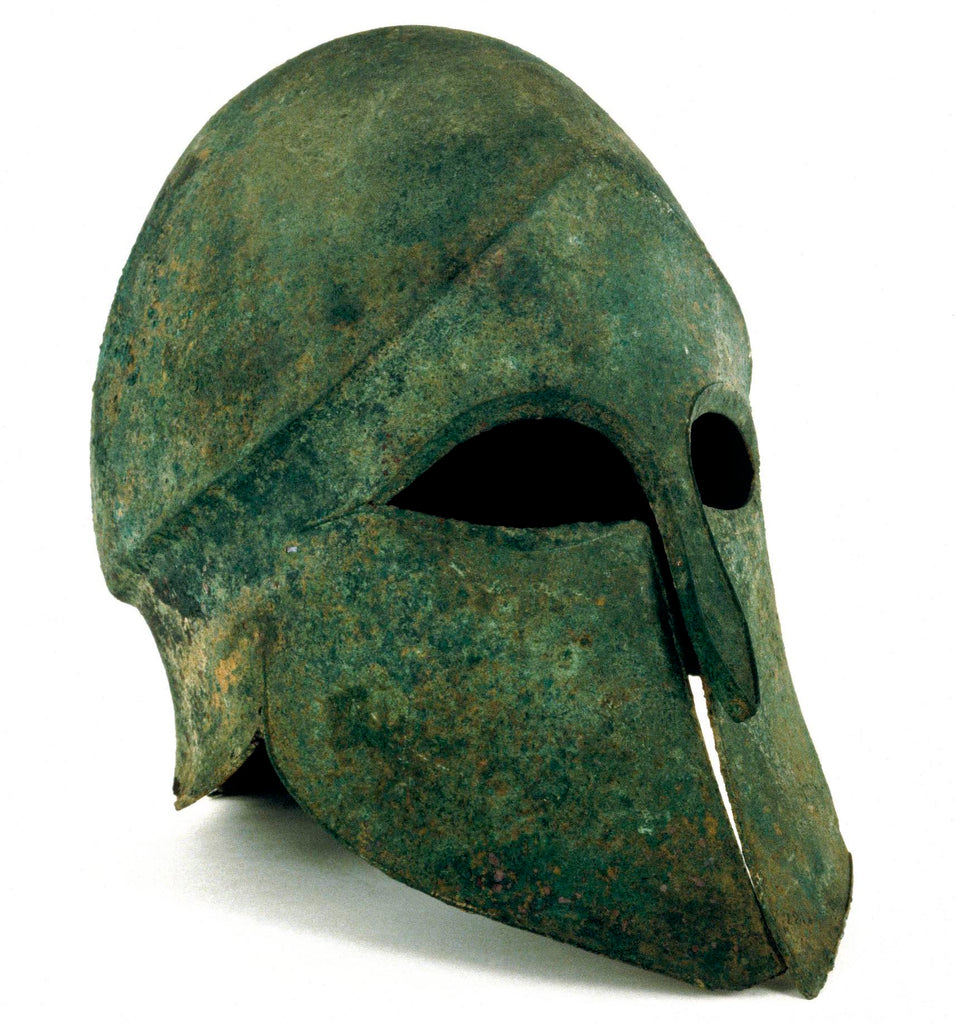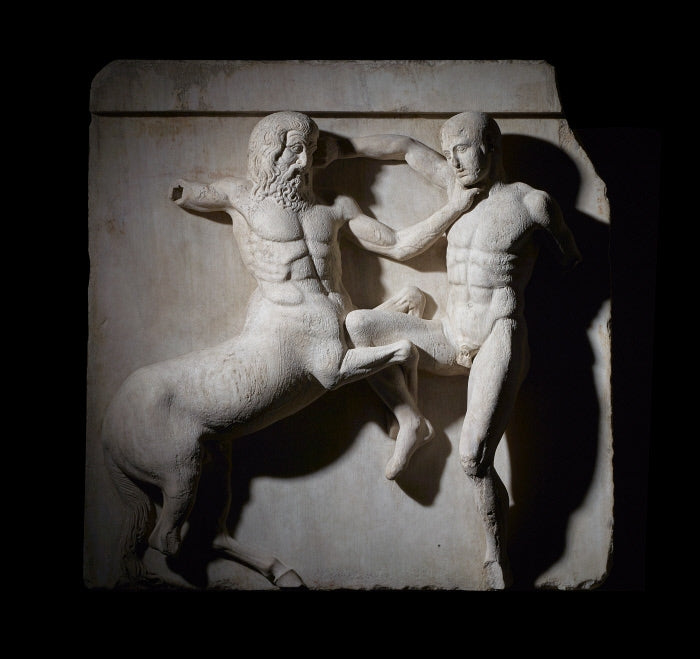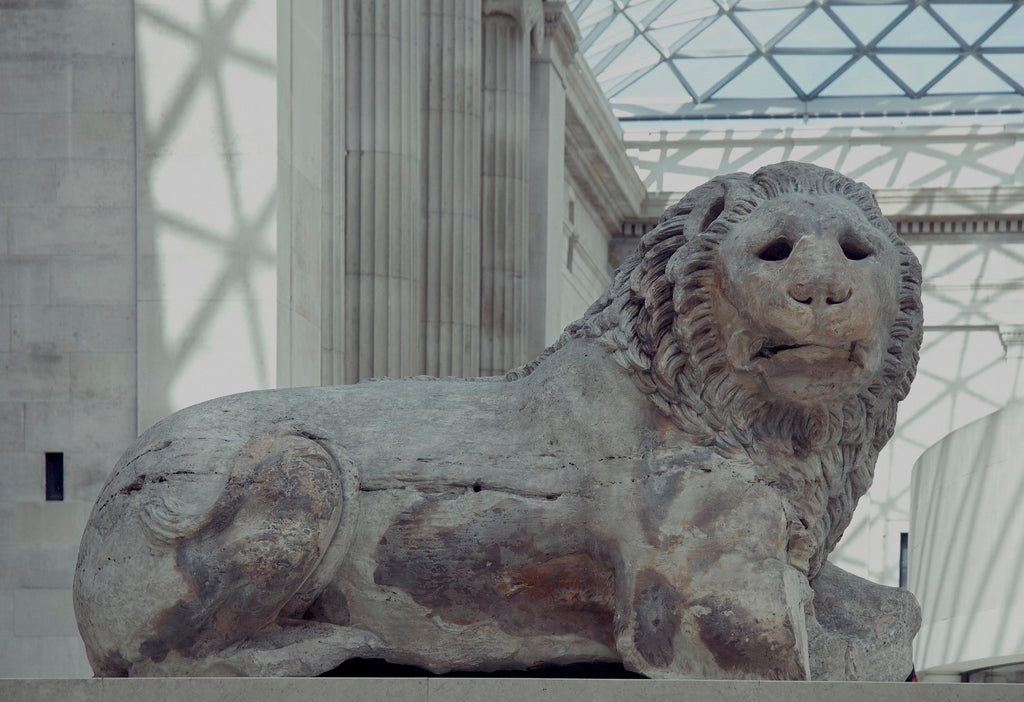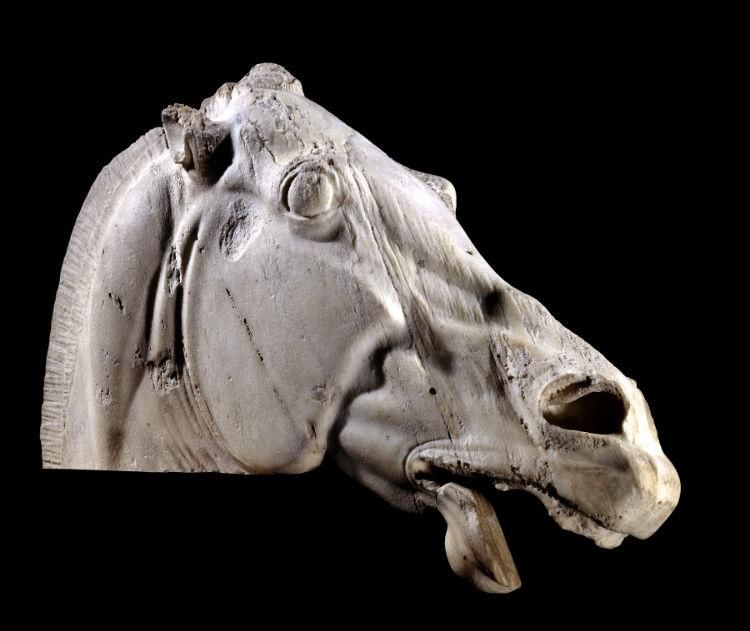In this series, we are traveling the world's greatest museums through the eyes and minds of Cabana's curators, asking: if you only had an hour, what would you see? This week, Jamb founder, Will Fisher, is at the British Museum.
BY WILL FISHER | 14 DECEMBER 2023

Jamb's Will Fisher and Charlotte Freemantle
Sir Robert Smirke, the architect who designed the British Museum, has held a special place in my heart for quite some time. He designed a bookcase I bought for my first flat and since then I’ve hardly seen such a good one. Looking up at just one of the 44 Ionic columns that make up the south colonnade, it was wonderful to think that the man responsible for such work had a hand in the decoration of my flat.
Walking around the museum's Enlightenment Gallery, I was amazed by the quality and design of Smirke’s cabinetry. The architectural mouldings and bronze fittings caught my eye even before the treasures that lined the shelves. To me, walking around the museum is valuable because it resets my aesthetic and articulates what we’re trying to achieve at Jamb. To have such a trove of objects in central London, drawn from every corner of the Earth, is a privilege I don’t intend on getting used to.
Yet trying to rush like an exocet around the museum looking at everything doesn’t help anyone. Don’t bite off more than you can chew. Here are my favorites.
The British Museum benches
Before I’d even got into the museum, I was on the lookout for the British Museum bench. Luckily, I found one quickly, just outside the main entrance in the portico. Such considered design and solid, indestructible construction are just right for the British Museum. Last year, Charlotte (my wife) decorated Aldourie castle in Scotland and for the boot room, Jamb made a bench inspired by those at the British Museum. It was a good choice because they are robust and yet this robustness does not look ugly; it is as if its robust quality is a product of architectural, not practical, necessity.

Verdigris Helmet, c.500BC
I love the broad cheek plates that taper in at the temple and the bevelled edge of the eye holes. This Corinthian helmet, beaten from a single sheet of bronze, conveys, through its mask like quality, the theatre of war, not the snub-nosed brutality that medieval helmets, to me at least, convey. The green verdigris that formed over millennia is something I find particularly beautiful. This turquoise, the lichen of antiquity, we try to replicate for the finish of our reproduction lanterns. At Jamb, our antique verdigris finish, applied by hand, has been honed over twenty years which lend our lanterns the ability to hold their own against real antiques.

Bust of Hercules, 2nd century
I think this bust of Hercules has such presence because it evokes his whole being. We don’t just have a head, beard and half of his shoulders, but his spirit, the strength of his limbs, his magnanimity and pride. He seems to be thinking about something and looks forlorn. This is not the Hercules we are most familiar with (the club wielding, violent demigod) but a Hercules caught in thought.

Etruscan Cinerary Urn, 200-100BC
This alabaster cinerary urn shows a man reclining on the lid holding a bowl. He looks like he couldn’t be more relaxed while beneath him the chest depicts a sea-monster attacking two men. A cinerary urn beneath a console table, upon which is a bust, is a typical component of the English country house aesthetic which I so admire.

Chair from a wealthy tomb at Thebes, Ancient Egypt, 1550-1292BC
I think the ivory lotus flowers inlaid into the back of this chair are just right; simple and yet delicate enough to catch the petals of such a fine flower. This chair is from the 18th Dynasty of Ancient Egypt (1550-1292 BC), a period when Egypt was at the height of her power. Even at such an age, there is something comical about it, a sort of truculence that I think comes from the short lion legs.
Because of their diminutive stature they don’t quite give off the impression they hope to. Perhaps it was the throne of some petulant boy-pharaoh.

Roman mosaic, 50BC
Eight fish, two cuttlefish and an eel can be found in the Enlightenment gallery in this mosaic. Around the rim of the frame runs the inscription: ‘Discovered in the ruins of the palace of Pope Leo 12th at the Villa Chichignola. Presented by Pope Gregory 16th to Sir Edward Thomason in the year 1832. The mosaic contains 20,000 silicious pebbles is (sic) the work of Sosus Pergami who flourished 320 years before Christ and is mentioned in the writings of the Elder Pliny.’
I’d do anything to have this on the wall at home. It is clear from this mosaic that fish do not blink. All their eyes look a little gormless, staring, in their watery world, at nothing in particular. I think partly why it’s so charming is because it is naïve and yet also the work of the highly skilled and patient, Pergami. The naivety is not contrived and therefore has the freshness of a child’s drawing.
Will Fisher's sculpture-filled home in London © Simon Upton, Cabana N15

A Parthenon Metope, 447-432BC
Metopes are carvings in high relief often depicting combat. They were placed over the colonnade on all four sides of the Parthenon. Here, a Lapith (the Lapiths were a people who lived in northern Greece) is locked in a fight with a centaur. What’s not to like! It is great how the Lapith’s knee, against the breast of the centaur, has been caught by the centaur’s front leg, his hoof just visible.

Aztec, coiled rattlesnake, granite, c.1325-1521
Charlotte [my wife] and I have just returned from Mexico City where we attended the Design Leadership summit. The city was fantastic and I can’t wait to get back there for some more walking around. While in Mexico, we saw a serpiente de cascabel that looked remarkably similar to this one (pictured above).
I love his forked tongue and heavily carved rattle of 13 segments caught in the granite. In Aztec culture, the snake is not associated with sneakiness and sin, as in ours, but with fertility - within the snake’s coils is an empty chamber that maybe can be interpreted as a sort of womb, a source of new life.

The Lion of Knidos, 350-200BC
The Knidos Lion, which sits beneath the museum's glass canopy designed by Foster and partners, is magnificent. I think there’s a melancholy to him, a sadness that he’s never been able to shake off even after 2000 years. He was, after all, found upon a family tomb containing 12 burial chambers arranged in a circle, which may have made him overly preoccupied with death. Yet maybe he looked more triumphant when he was a younger lion, when he still had his jaw and forepaws.

Marble horse head, East pediment of the Parthenon, 447-432BC
I love the interaction between the striated marble and the carving. The striations in the marble look like the taut fibres beneath the horses skin; it is as if the horse was turned to marble, rather than marble turned into a horse. The jaw muscle is left uncarved and there are dowel holes where a metal bridle would have been attached.
- - - - - - - - - -
MORE IN THIS SERIES
Cabana Magazine N24
Covers by Morris & Co.
This issue will transport you across countries and continents where craft and culture converge. Evocative travel portfolios reveal Japan's elegant restraint, Peru's sacred churches ablaze with color, and striking architecture in a fading Addis Ababa. Inspiring minds from the late Giorgio Armani to Nikolai von Bismarck spark curiosity, while exclusive homes—from the dazzling Burghley House in England and an Anglo-Italian dream in Milan, to a Dionysian retreat in Patmos and a historic Pennsylvania farmhouse—become portals that recall, evoke and transport.






















































